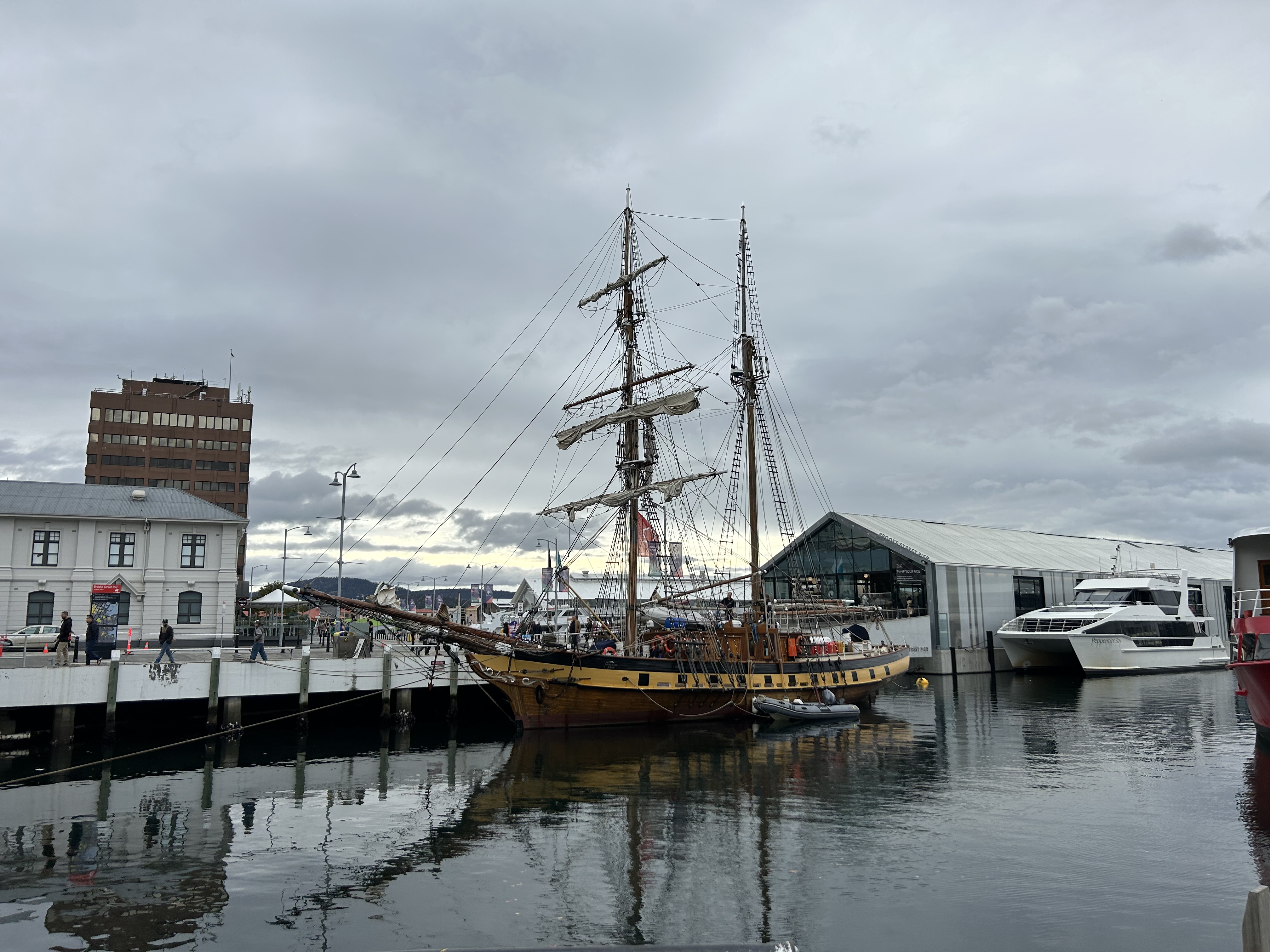In late September of 1985, Gustaaf Hallegraeff, a specialist on marine algae and state scientist working for Australia’s Commonwealth Scientific and Industrial Research Organization (CSIRO), dipped his sampling bucket into the waters of the Derwent River in Tasmania. Hallegraeff (himself a transplant from the Netherlands), had moved along with the entire Marine Division of CSIRO to Hobart earlier that year. Hobart in the 1980s was a sleepy port city and capital of its smallest state. It was also the least populous state and combined with its dependence on export-oriented industry, had languished during the cash-strapped 1970s. By the 1980s, Tasmania was clawing its way out of recession and the Federal government favored moving CSIRO’s Marine offices from Sydney to this much more remote location, in part, because it would inject some much-needed capital and spur development of its primary industries.
Hallegraeff may have felt ambivalent about this move, but this didn’t stop him from immediately taking advantage of this change of scene. In his own telling, one of the first things he did in Hobart was sample the river. It was then experiencing an algal bloom, or what is colloquially referred to as a “red tide”. What he discovered was shocking – the bloom was composed of a species of single-celled algae (dinoflagellate) that had never been observed in Australia, or indeed, in the southern hemisphere. More alarming still, the species, Gymnodinium catenatum, was one of the relatively few species of dinoflagellate that produce toxins harmful to humans – at least when filtered through shellfish and later consumed as seafood. Unfortunately, the Derwent River also played host to a nascent, but quickly expanding aquaculture industry – so the risk was obvious. “I knew that this organisms had killed children in Mexico”, Hallegraeff would later explain, so he promptly called Tasmanian public health authorities to alert them about the hazard. Albeit reluctantly, the state temporarily closed its affected shellfish farms.

I recently spoke with Dr. Hallegraeff who related some of these events, and what struck me after the conversation was how important chance (or coincidence) seemed to be throughout it. By seeming coincidence, a specialist on algae and one of the few people in Australia capable of identifying the species, arrived in Hobart amidst a novel algal bloom. This algal bloom just happened to occur in close proximity to shellfish farms – the one socio-environmental variable that could transform this otherwise benign event into a public health emergency. Was it a coincidence that Tasmania, so intent on exporting its “clean, green” image during this period encountered this specific species of algae?
To greater or lesser degrees, no, but neither did straightforward causal connections immediately present themselves. Dr. Hallegraeff was a specialist on algae during a period of time when the science (and public anxieties) about “toxic dinoflagellates” were on the rise. He arrived in Tasmania in part because his employer, a state-sponsored research organization, wanted to spur economic development in a recovering economy. The state of Tasmania was also interested in using resource extraction to “export” its way out of recession. This resulted in a growing trade with Japan, which demanded hardwood woodchips to feed its rapacious pulp and paper mills. Hallegraeff would later discover those same woodchip ships brought G. catenatum to Tasmanian shores in their ballast tanks. Aquaculture played no small role in this story either. Their relatively quick acquiescence to shellfish closures makes sense when viewed through this export-oriented mindset. Tasmanian shellfish farmers had recently requested FDA licensure to sell their products in the United States. This was the gold standard for export licenses, one that opened markets across the Pacific and even in Europe. Tasmania would be the first state to achieve this feat, largely on the backs of their “clean, green” image. Tasmanian shellfish farmers couldn’t risk a public health scare, or worse, disaster derailing this process.
Of course, coincidence makes for a better (or at least more dramatic) story than one driven by the push and pull of supply and demand, state-driven science, the pressure to accelerate development by selling off natural resources, or the incentive to preserve an environmental imaginary as a valuable marketing tool. At the same time, it’s not as if chance played NO role. Hallegraeff didn’t have to end up in Australia, for instance, and this bloom didn’t have to manifest during that specific month (or even year). G. catenatum can exist in a hardy resting cyst state, and could’ve survived to bloom years later. Its blooms are notoriously difficult to predict, often awaiting a suite of environmental factors coming into precise convergence.
The contingencies in this process are many, and they are weighted by the difficulty of parsing the truly chance events from the deeper structural changes that set them in motion, many of which would come into conjuncture in the 1980s. Although this story begins in 1985, I could’ve begun it many decades earlier. Spoiler: my own approach will likely take this “deeper” approach. It would also last for decades to come (even to the present day, by some readings). I am not in a position, yet, to delimit this story. What I can say, is that the more I unravel, the more surprises (and seeming coincidences) I discover.

Pingback: Vertical & lateral approaches to complex problems | Mapping Environments